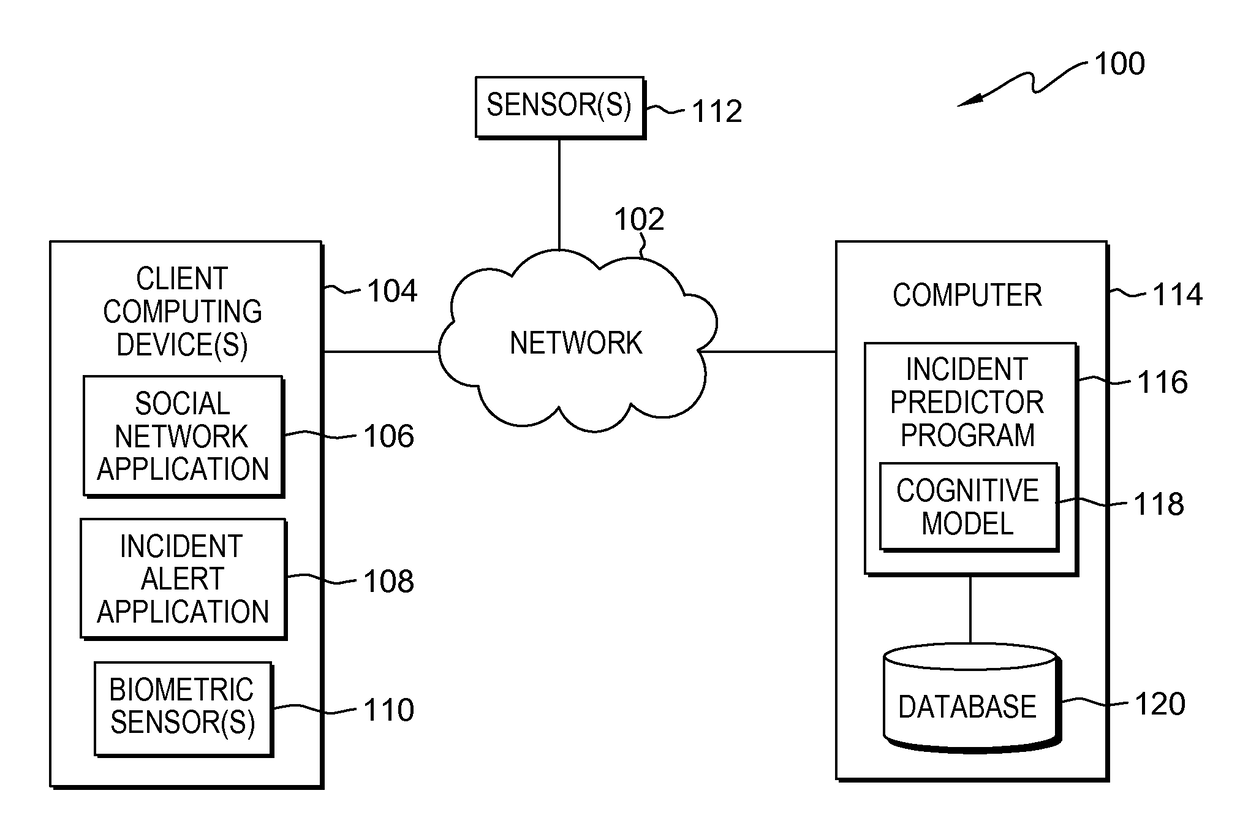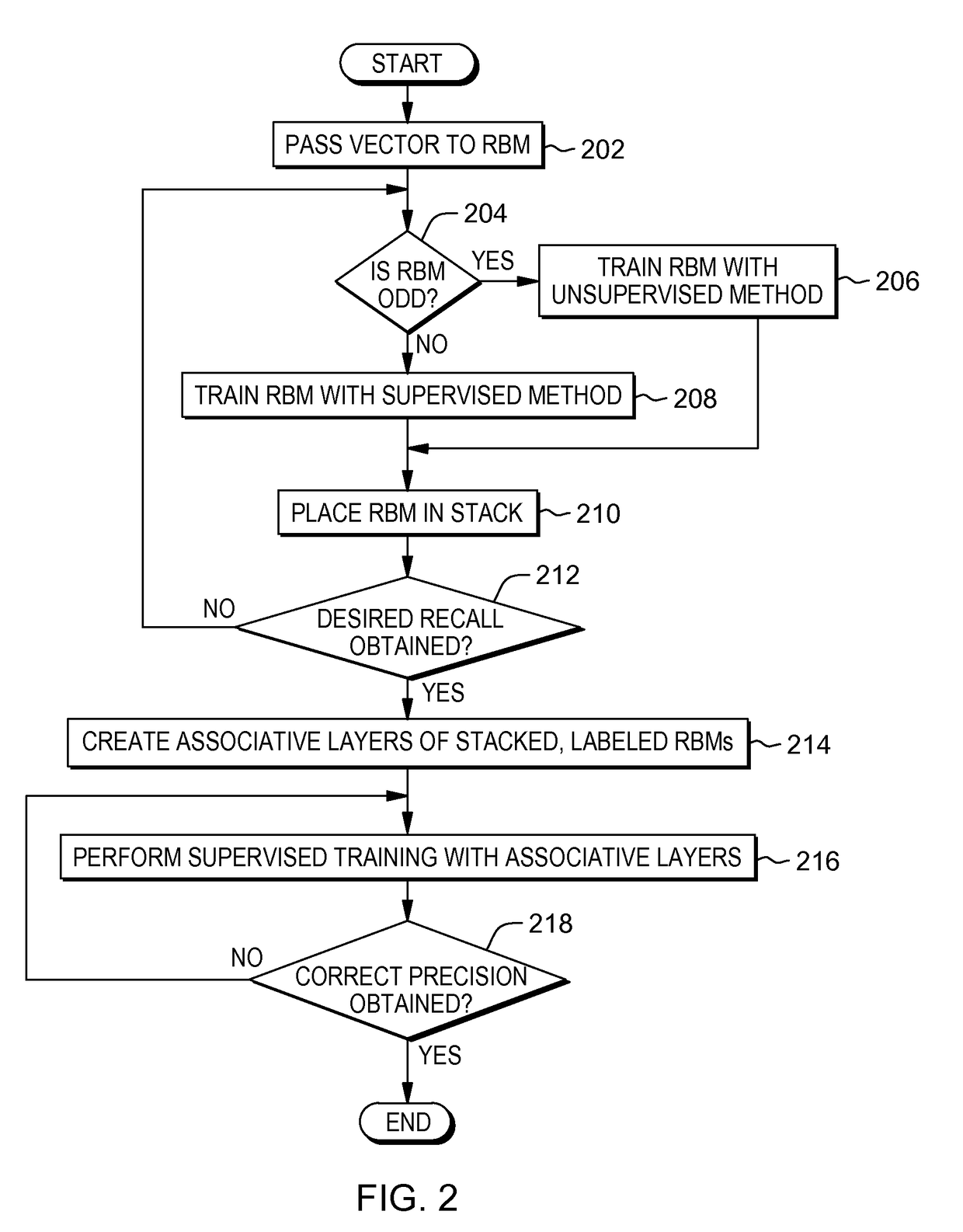Incident prediction and response using deep learning techniques and multimodal data
a deep learning and incident technology, applied in the field of machine learning, can solve the problems of limited scope, unreliable data received from people, either via crowdsourcing or social networks, and data likely to be limited, and achieve the effect of effective methods
- Summary
- Abstract
- Description
- Claims
- Application Information
AI Technical Summary
Benefits of technology
Problems solved by technology
Method used
Image
Examples
Embodiment Construction
[0017]Embodiments of the present invention recognize that tangible and intangible damages and losses resulting from a critical incident may be minimized, or eliminated, by implementing a system that aggregates, i.e., collects and combines, data from a plurality of sources, predicts an occurrence of an incident and associated ramifications, and notifies stakeholders of status and instructions to minimize risk. The aggregated data may include any type of data corresponding to an incident such as a description of the incident, the location of the incident, the time of the incident, weather conditions in the area of the incident, current population of the area of the incident, historical accounts of similar incidents, schedules of public transportation and events in the area of the incident, status of security systems and personnel, etc. The aggregated data may include data received from an observer or bystander of the incident as well as data retrieved from other sources. Embodiments o...
PUM
 Login to View More
Login to View More Abstract
Description
Claims
Application Information
 Login to View More
Login to View More - R&D
- Intellectual Property
- Life Sciences
- Materials
- Tech Scout
- Unparalleled Data Quality
- Higher Quality Content
- 60% Fewer Hallucinations
Browse by: Latest US Patents, China's latest patents, Technical Efficacy Thesaurus, Application Domain, Technology Topic, Popular Technical Reports.
© 2025 PatSnap. All rights reserved.Legal|Privacy policy|Modern Slavery Act Transparency Statement|Sitemap|About US| Contact US: help@patsnap.com



